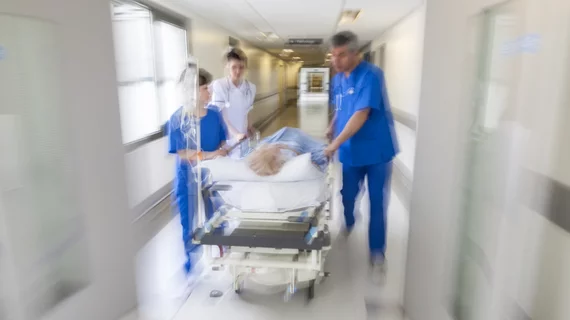Patients treated at TIA clinics do not face a higher risk of subsequent stroke
Patients treated for a transient ischemic attack (TIA) or minor ischemic stroke (mIS) do not face a higher risk of subsequent stroke if treated at a TIA clinic, according to new data published in JAMA Network Open.
However, the study's authors added, another stroke was more likely for patients treated in an emergency department (emergency department) without additional follow-up.
The team examined data from 71 different studies, covering 226,683 patients.
Among the 5,636 patients who received care at TIA clinics, the mean age was 65.7 years old and 50.8% were men. Of the 130,139 who received inpatient care, the mean age was 78.3 years old and 38,4% were men. Finally, among the 3,605 patients who received care in an ED, the mean age was 68.9 years old and 52.4% were men.
Overall, the authors found that patients treated at a TIA clinic had a 0.3% chance of having another stroke following a TIA or mIS. The risk increased to 1.0% at seven days, 1.3% at 30 days and 2.1% at 90 days.
Meanwhile, among the patients who were treated as inpatients, the risk of another stroke was to 0.5% within two days, 1.2% within seven days, 1.6% within 30 days, and 2.8% within 90 days.
Among ED patients, meanwhile, the risk of another stroke was to 1.9% within two days, 3.4% within seven days, 3.5% within 30 days, and 3.5% within 90 days.
Overall, compared with the inpatient group, TIA clinic patients tended to be younger, had a higher rate of carotid stenosis, yet a lower ABCD score.
“Our results also suggest an increased risk of subsequent stroke in patients who were treated and discharged from ED without assigned follow-up care," wrote lead author Shima Shahjouei, MD, a neurology specialist with Geisinger Health System, and colleagues. “Previous studies have reported that patients with TIA who were discharged from ED were less likely to receive guideline-concordant care and underwent fewer timely brain and carotid imaging, monitoring for arrhythmia, and administration of preventive medications such as antithrombotic, antihypertensive, and lipid-lowering agents.”
The group also wrote that TIA clinics may be a reliable alternative to hospitalization, calling them "an effective component of the TIA care component pathway."
Read the full study here.
